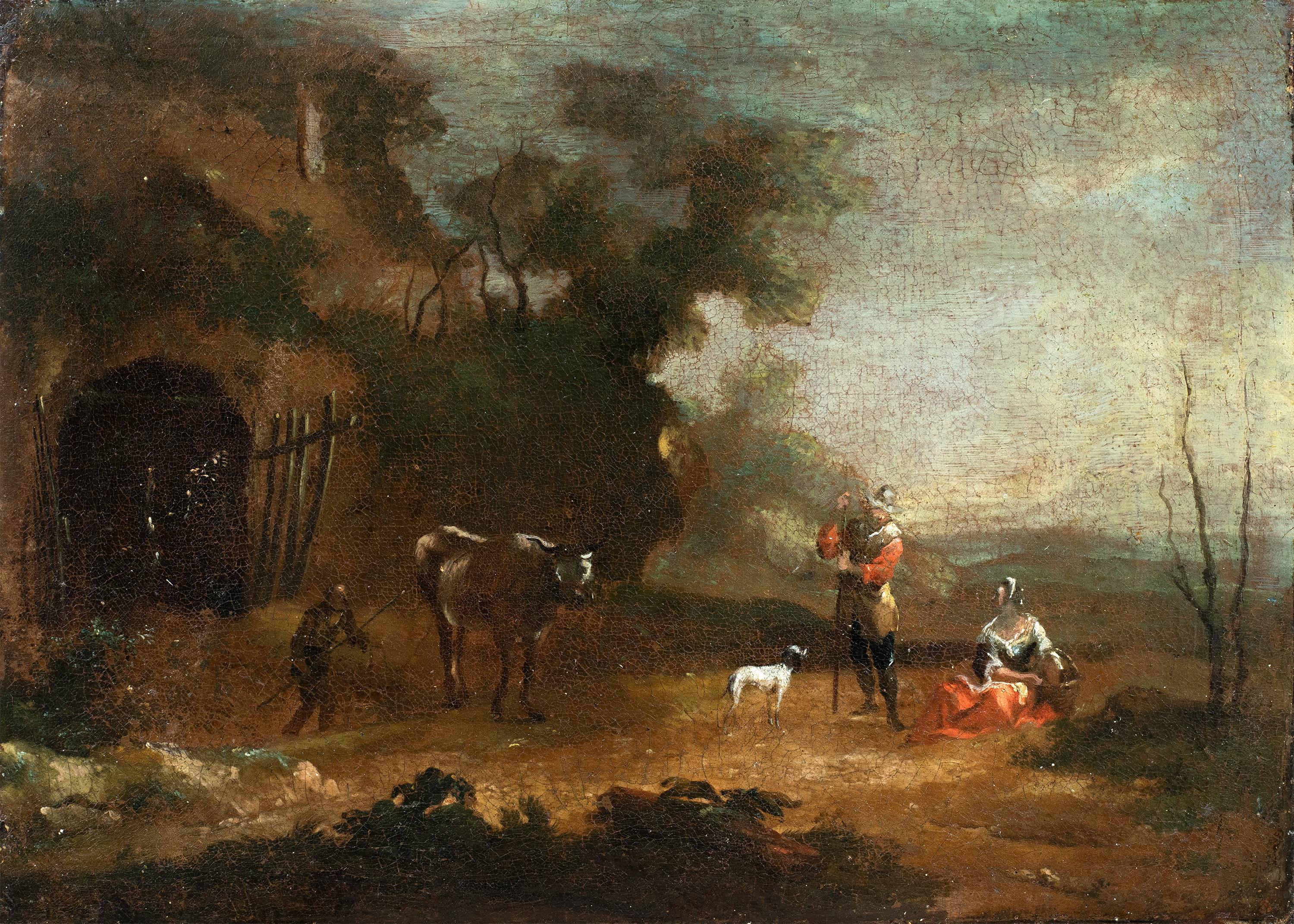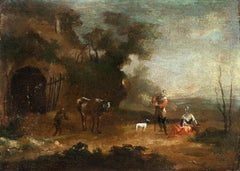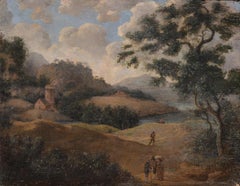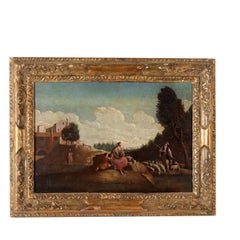Items Similar to Óleo sobre tela - Viajeros y campesinos junto al pozo
Want more images or videos?
Request additional images or videos from the seller
1 of 19
Óleo sobre tela - Viajeros y campesinos junto al pozo
$1,417.27
£1,066.99
€1,200
CA$1,952.38
A$2,186.54
CHF 1,140.90
MX$26,707.66
NOK 14,515.59
SEK 13,682.68
DKK 9,134.56
About the Item
La obra no va firmada, es de autor anónimo
Se presenta enmarcada la obra con un marco de la época de la pintura en madera dorada (el marco presenta algunas pequeñas faltas)
El estado de la pintura es aceptable
Medidas de la obra: 75 cm. de altura x 100 cm. de ancho
Medidas del marco: 89 cm. de altura x 116 cm. de ancho
- Dimensions:Height: 35.04 in (89 cm)Width: 45.67 in (116 cm)Depth: 1.58 in (4 cm)
- More Editions & Sizes:75 x 100 cm. - Edición únicaPrice: $1,417
- Medium:
- Movement & Style:
- Circle Of:Andrés Cortés y Aguilar (circle) (1812 - 1879, Spanish)
- Period:
- Condition:
- Gallery Location:Sant Celoni, ES
- Reference Number:1stDibs: LU2801216381272
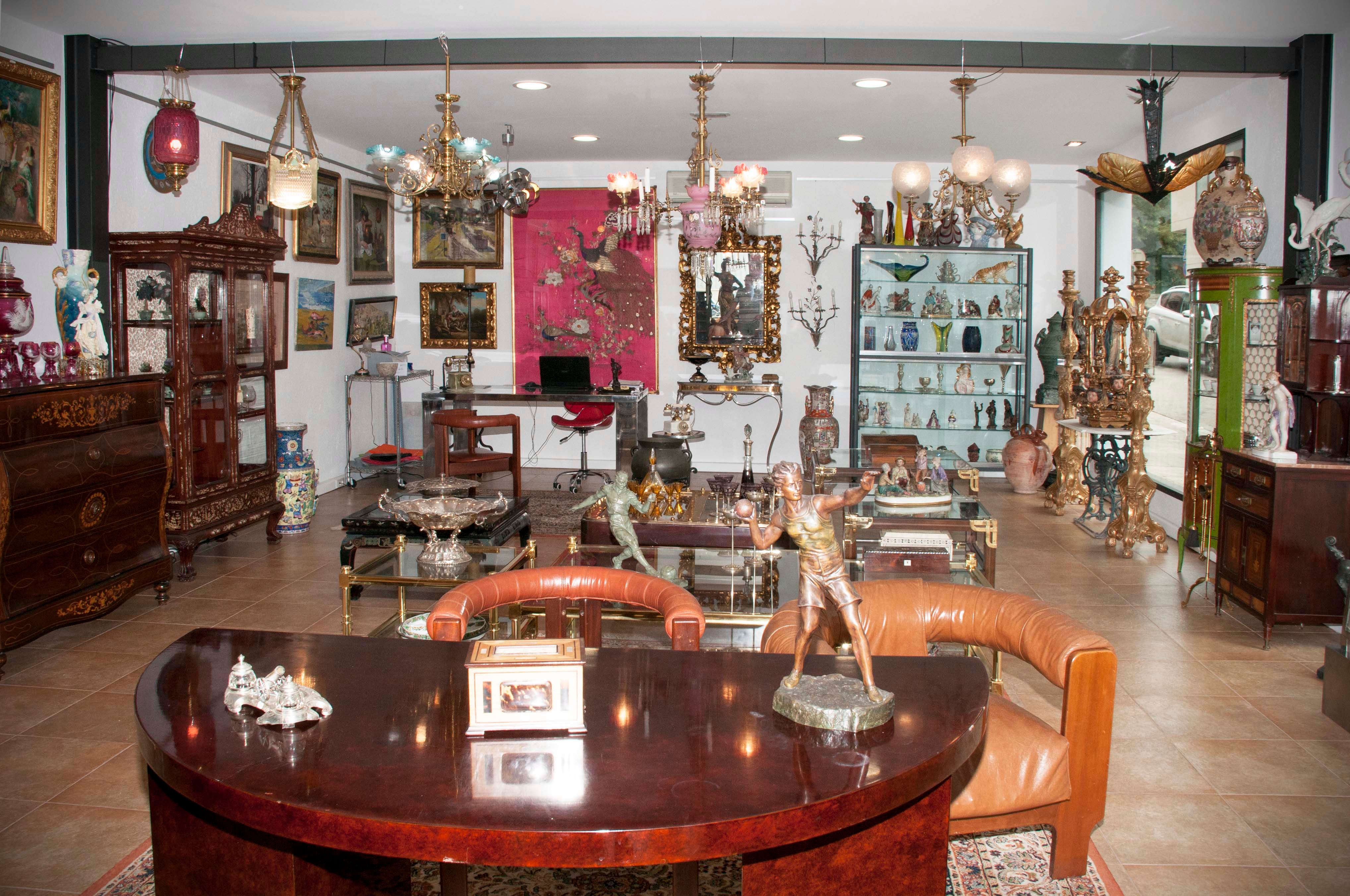
About the Seller
5.0
Gold Seller
Premium sellers maintaining a 4.3+ rating and 24-hour response times
Established in 1974
1stDibs seller since 2024
15 sales on 1stDibs
Typical response time: 2 hours
- ShippingRetrieving quote...Shipping from: Sant Celoni, Spain
- Return Policy
Authenticity Guarantee
In the unlikely event there’s an issue with an item’s authenticity, contact us within 1 year for a full refund. DetailsMoney-Back Guarantee
If your item is not as described, is damaged in transit, or does not arrive, contact us within 7 days for a full refund. Details24-Hour Cancellation
You have a 24-hour grace period in which to reconsider your purchase, with no questions asked.Vetted Professional Sellers
Our world-class sellers must adhere to strict standards for service and quality, maintaining the integrity of our listings.Price-Match Guarantee
If you find that a seller listed the same item for a lower price elsewhere, we’ll match it.Trusted Global Delivery
Our best-in-class carrier network provides specialized shipping options worldwide, including custom delivery.More From This Seller
View AllEscuela flamenca (siglo xviii) - Óleo sobre tela - Paisaje con figura a caballo
Located in Sant Celoni, ES
La obra no va firmada, es de autor anónimo
Se presenta enmarcada la pintura
El estado de la obra se puede ver, es aceptable, pero con algunas restauraciones antiguas y la tela está...
Category
Late 18th Century Old Masters Landscape Paintings
Materials
Oil
Óleo sobre tela - Paisaje
Located in Sant Celoni, ES
La obra va firmada por el artista en la parte inferior y fechada del año 1889
Estado de conservación aceptable el de la obra
La obra se presenta sin enmarcar
Medidas obra: 51 cm a...
Category
1880s Realist Landscape Paintings
Materials
Oil
Óleo sobre tela - Milagro en el camino
Located in Sant Celoni, ES
El estado de conservación de la obra es aceptable
Se presenta enmarcada la obra (el marco presenta algunas leves faltas)
Medidas obra: 36 cm altura x 48 cm ancho.
Medidas marco: 4...
Category
Mid-19th Century Old Masters Figurative Paintings
Materials
Oil
Escuela española (XIX) - Óleo sobre tela - Castillo de Cardona
Located in Sant Celoni, ES
Firmado en la parte trasera, parece poner Sevilla Urtado (desconozco el artista) y también va titulada "Castillo de Cardona)
Se presenta enmarcada la pintura con un marco del siglo ...
Category
Mid-19th Century Old Masters Landscape Paintings
Materials
Oil
Escuela española (XVIII) - Óleo sobre cobre - El buen pastor
Located in Sant Celoni, ES
La obra no va firmada, pero en la parte trasera, hay unas inscripciones para mi ilegibles
El estado de la obra se puede ver, es bastante aceptable, pero tiene una pátina un poco bri...
Category
Early 18th Century Old Masters Figurative Paintings
Materials
Oil
Excuela española (XVIII) - Escena bíblica - Óleo sobre tela
Located in Sant Celoni, ES
Como pueden apreciar, la obra no va firmada, es de autor anónimo
Se presenta sin enmarcar la pintura
El estado de la obra se puede ver, presenta varias faltas de pintura y precisar...
Category
18th Century Old Masters Figurative Paintings
Materials
Oil
You May Also Like
Antique Italian painter - 18th century landscape painting - Sheperds
Located in Varmo, IT
Italian painter (18th century) - Landscape with shepherds at rest.
44 x 61 cm.
Antique oil painting on canvas, without frame (not signed).
Condition report: Lined canvas. Good con...
Category
Early 18th Century Rococo Landscape Paintings
Materials
Canvas, Oil
$944 Sale Price
68% Off
Painted Landscape with Figures and Herd 18th century
Located in Milan, IT
Oil on Canvas. Central European school of the 18th century.
The vast northern landscape, rich in vegetation, is traversed by a small stream, along which, in the foreground, a herd o...
Category
18th Century Other Art Style Landscape Paintings
Materials
Oil
Mountain View Baroque Capriccio Landscape 17th century Oil Painting Old Master
Located in Stockholm, SE
Along the road, we see several travelers: some are walking at a leisurely pace, others are engaged in animated conversations. At the top of one mountain, a small castle stands proudl...
Category
17th Century Realist Landscape Paintings
Materials
Wood, Oil, Canvas
Landscape Painting with Pastoral Scene, 18th century
Located in Milan, IT
Oil on Canvas.
Of flavor bucolic and serene, the scene set in the countryside on the edge of the hamlet that can be glimpsed on the left shows a woman and her son standing near a st...
Category
18th Century Other Art Style Landscape Paintings
Materials
Oil
THOMASSIN Attributed Austrian landscapes romantic pair painting Brazil 19th
By Desiré Thomassin
Located in PARIS, FR
Désiré THOMASSIN (Attributed to)
Vienna, 1858 – Munich, 1933
Oil on panel
32 x 50 cm (42 x 60 cm with frame)
Inscription on the back “Thomassin / Braz...
Category
Mid-19th Century Romantic Landscape Paintings
Materials
Oil
Landscape with Gentleman on Horseback and Peasant Woman Receiving Alms
By Philips Wouwerman
Located in Stockholm, SE
Workshop / Circle of Philips Wouwerman (1619-1668)
Landscape with Gentleman on Horseback and Peasant Woman Receiving Alms
oil on oak panel
12.40 x 14.17 inches (31.5 x 36 cm)
wit...
Category
17th Century Old Masters Landscape Paintings
Materials
Oak, Oil, Wood Panel
More Ways To Browse
Michael John Hill
Native American Pot
Todd White Paintings
Antique Dutch Picture Frames
Dutch Harbor Painting
Grand Canal Oil Painting
Norwich School Oil Painting
1970 Fashion Illustration
Alex Kalenyuk
California Travel Poster
Leigh Wells
P Clark
Paris With Horse And Carriage
Peter Pots
Pope John Paul Ii
William Harvey
Wine Country Painting
Alice Daughter
